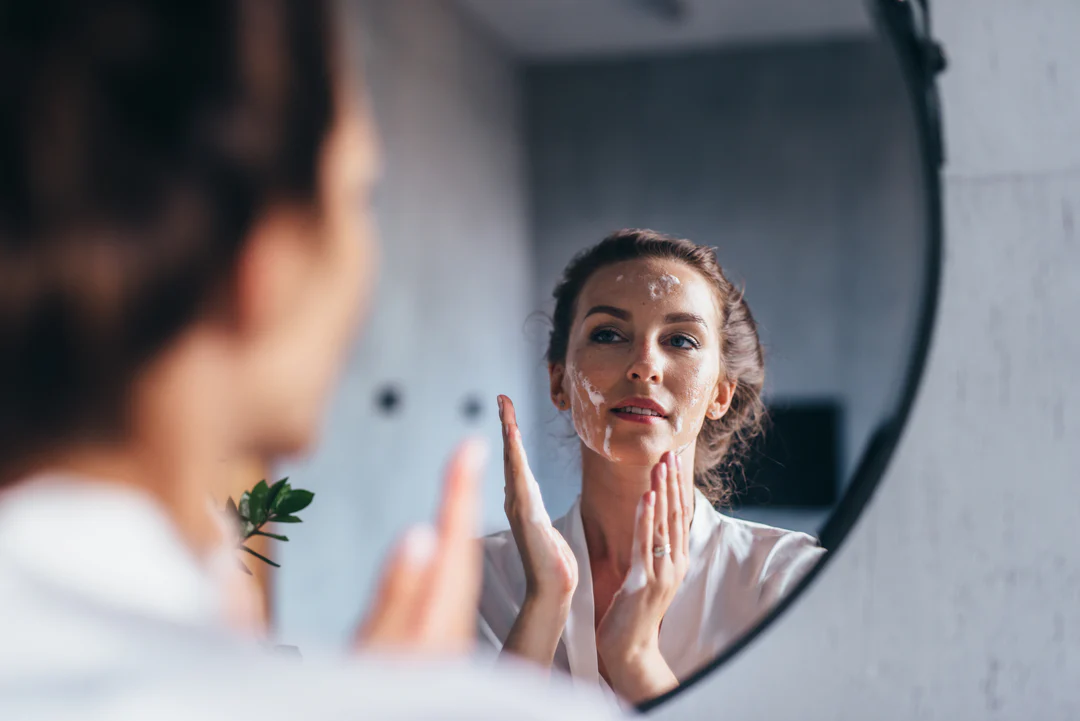
**Can You Mix Azelaic Acid with Moisturiser?**
Yes, you can absolutely mix **azelaic acid** with **moisturizer**, but there are a few important things to consider in how you apply them together for optimal results. Here’s a breakdown of how to incorporate both into your skincare routine and the best way to layer your products for maximum benefits.
### What is Azelaic Acid?
Azelaic acid is a **naturally derived ingredient** (from grains like barley, rye, and wheat) known for its anti-inflammatory, antimicrobial, and exfoliating properties. It’s often used to treat acne, rosacea, hyperpigmentation, and general skin texture issues. Azelaic acid helps to:
– **Unclog pores**: Prevents acne and breakouts.
– **Brighten skin**: Reduces hyperpigmentation like dark spots and post-acne scars.
– **Calm inflammation**: Helps with rosacea and other redness-related skin concerns.
### How to Use Azelaic Acid with Moisturiser
Azelaic acid is typically used in **serum or cream form**. If you’re using azelaic acid as part of your skincare routine, here’s how to effectively layer it with a moisturizer:
1. **Cleanse the Skin**: Start by using a gentle face wash or cleanser to remove dirt, oil, and makeup.
2. **Apply an Exfoliating Toner (Optional)**: If you use a toner in your routine, go for an **exfoliating toner** (optional), especially one that is gentle and free from harsh acids, as azelaic acid already provides exfoliation.
3. **Apply Hyaluronic Acid Serum (Optional)**: If you’re prone to dryness, apply a **hyaluronic acid serum** to lock moisture into the skin. This helps to hydrate and balance out the potentially drying effects of azelaic acid.
4. **Apply Azelaic Acid Serum or Cream**: Now apply the **azelaic acid serum** (or cream) to target acne, hyperpigmentation, or inflammation. Azelaic acid can be a bit drying, so this step will help address that.
5. **Follow with Moisturiser**: After the azelaic acid has been absorbed into your skin (wait about 1-2 minutes), follow with a **moisturizer**. The moisturizer will help lock in hydration and protect the skin barrier.
6. **Finish with Sunscreen (AM routine only)**: If you’re using this routine in the morning, always finish with a broad-spectrum **SPF 30 or higher** to protect your skin from UV damage, especially since exfoliating acids like azelaic acid can increase your skin’s sensitivity to the sun.
### Should Azelaic Acid Be Applied Before or After Moisturiser?
In general, **azelaic acid should be applied before moisturizer**. This allows the active ingredient to penetrate and deliver its benefits, while the moisturizer will form a barrier on top to lock in moisture and protect the skin from environmental damage.
Here’s the ideal order:
1. **Hyaluronic Acid (optional)**: Hydrates and locks in moisture.
2. **Azelaic Acid**: Targets acne, pigmentation, and inflammation.
3. **Moisturiser**: Seals everything in and provides hydration and protection.
### Can You Use Azelaic Acid on Wet Skin?
It’s best not to apply **azelaic acid** directly to **wet skin**. While some ingredients (like **hyaluronic acid**) benefit from being applied to damp skin, azelaic acid works best when the skin is **slightly damp or semi-dry**. Applying it to too-wet skin may dilute its effectiveness or cause irritation.
A good approach is to allow your skin to air dry or pat it gently with a towel after cleansing and before applying azelaic acid.
### Can You Mix Azelaic Acid with Niacinamide?
Yes, **azelaic acid and niacinamide** can be used together and make a great pair. Both ingredients have anti-inflammatory benefits, and together, they can help with:
– **Reducing acne and breakouts**: Both ingredients can help minimize pore congestion and calm redness.
– **Fading dark spots**: Niacinamide helps reduce the appearance of pigmentation, and when combined with azelaic acid, it can speed up the process of fading dark spots or post-acne scars.
In this case, it’s best to apply **niacinamide first**, followed by **azelaic acid**, as niacinamide helps hydrate and calm the skin, making it more receptive to the azelaic acid.
### Can You Use Azelaic Acid with Other Actives Like AHA/BHA?
You can use azelaic acid with **milder AHAs and BHAs**, but it’s best to alternate them (for example, use AHA/BHA in the evening and azelaic acid in the morning). Combining strong exfoliants like AHAs (e.g., glycolic acid) or BHAs (like salicylic acid) directly with azelaic acid can be too harsh and lead to irritation.
### Key Tips for Using Azelaic Acid:
– **Start Slowly**: If you’re new to azelaic acid, begin by using it every other day or just a few times a week. This will help your skin build tolerance.
– **Moisturize**: Since azelaic acid can be drying for some people, it’s crucial to follow up with a good moisturizer to prevent dryness or irritation.
– **Use Sunscreen**: Azelaic acid can make your skin more sensitive to the sun, so applying sunscreen every day is essential to avoid UV damage.
### Conclusion
Yes, you can mix **azelaic acid with moisturizer**—in fact, it’s recommended to use moisturizer after applying azelaic acid to seal in hydration and protect the skin. Just make sure to apply the azelaic acid serum or cream **before** the moisturizer, and be mindful of how your skin reacts to avoid irritation.
If you have any further questions about your skincare routine, feel free to reach out to skincare professionals or drop us a message on **Instagram** for more personalized advice!


